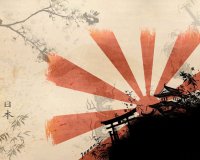Јапонија
- Креатор на темата Forrest Gump
- Време на започнување
@cool@
Η Μακεδονία δεν είναι Ελληνική
- Член од
- 2 јуни 2007
- Мислења
- 23.601
- Поени од реакции
- 27.109
еве ти одлична можностДефинитивно земја која сакам да ја посетам,ама не преку организирана тура,туку на своја рака и без тур водич.

незнам дали имаш прочитано, но сепак и за тие кои не знаат
Јапонија нуди бесплатни билети за 10 000 туристи за посета на земјата за период од 01.04.2012 до 31.03.2013 при услови што истите тие ќе мора да водат свои блогови од таму и да ги споделуваат впечатоците на интернет.
Претендентите на бесплатни авиобилети ќе се избираат по интернет
http://www.itar-tass.com/c11/243512.html
Ајт и Македонија нека направи нешто слично за русите- макар да им обезбеди 7-дневен бесплатен смештај колку да се промовира( наместо да ни ги прибира гејлада и Турција- нека дојдат овде

Max Legend
The black swordsman
- Член од
- 27 септември 2010
- Мислења
- 4.339
- Поени од реакции
- 6.478
Знам за ова,ама имам други обврски за жал.А посетата важи само за еден месец,јас сакам едно 3 месеци да поминам-и по можност да најдам работа таму.Јазик нема да ми биде проблем,ќе го учам со задоволство.еве ти одлична можност
незнам дали имаш прочитано, но сепак и за тие кои не знаат
Јапонија нуди бесплатни билети за 10 000 туристи за посета на земјата за период од 01.04.2012 до 31.03.2013 при услови што истите тие ќе мора да водат свои блогови од таму и да ги споделуваат впечатоците на интернет.
Претендентите на бесплатни авиобилети ќе се избираат по интернет
http://www.itar-tass.com/c11/243512.html
Ајт и Македонија нека направи нешто слично за русите- макар да им обезбеди 7-дневен бесплатен смештај колку да се промовира( наместо да ни ги прибира гејлада и Турција- нека дојдат овде
H
Hip.Hop_MKD
Гостин
Јапонија | 日本

Региони
Територијата на Јапонија е поделена на региони. Јапонија се состои од четири главни острови и голем број на помали острови. Најголемите и главни острови се, од север кон југ,Хокаидо (北海道), Хоншу (本州, најголемиот остров), Шикоку (四国), и Кјушу (九州). Исто така Јапонија се состои од 6 800 острови со брег од 100 метри или повеќе. Хоншу, убедливо најголемиот и најнаселениот остров во Јапонија, е поделен на пет региони. Другите острови не се поделени на подрегиони, па така секој претставува еден регион.
Јапонија, земја на острови, се протега по источниот брег на Азија. Главните острови (Хокаидо, Хоншу, Шикоку и Кјушу) некогаш се нарекуваат и домашни острови. Наха, на островотОкинава, во Рјукју архипелагот, се наоѓа 600 km на југозапад од Кјушу. Во поголемиот дел од островите во Јапонија спаѓаат 3,000 помали острови од архипелагот.
- Површина: 377,835 km (вклучувајќи 3,091 km² територијални води)
- Поголеми острови: Хоншу, Хокаидо, Кјушу, Шикоку
- Брегови линии: 29,751 km²
- Вештачки формирана земја во Токискиот залив: 249 km²
- Највисок врв: Фуџи: (3776m)
- Најниска точка: Хачиро-гата -4 m
Јапонија е ситуирана во вуланска заона на пацифичкиот огнен прстен. Фреквентни слаби потреси и повремени вулкански ерупции се чувствуваат низ островите. Деструктивниземјотреси, кои често резултираат во цунами, се случуваат повеќе пати во текот на еден век. Најскорешните земјотреси се оној од 2004 во Чуецу, и големиот зејотрес во Ханшин од1995. Редовна појава во Јапонија се геотермалните извори (онсен), кои се максимално искористени како престојувалишта.
Започнувам со Јапонските дворци

Дворецот „Bitchu Matsuyama“
Првиот дворец бил изграде на соседната планина во далечната 1240 год., додека денешниот дворец датира од 1683 год. кога Mizunoya Sakyonosuke Katsumune го има изградено дворецот на денешната локација.
Дворецот „Hikone“
Дворецот „Hikone“ е најпознат по местото од историска важност каде е изграден – Hikone, префектурата Shiga, Јапонија. Потекнува од далечната 1603 год. кога Naokatsu, син на некогашниот дамио Ii Naomasa, наредил негова изградба.
Дворецот „Himeji“
Дворецот „Himeji“ се смета за најдобриот „преживеан“ пример на типичната архитектура на јапонски дворец, вклучувајќи систем од 83 градби со напреден систем на одбрана.
Дворецот „Hirosaki“
Дворецот „Hirosaki“ е гратцки дворец кој отсекогаш играл важна улога во политиката и економијата на регионот изграден во XVII век.
Дворецот „Inuyama“
Дворецот „Inuyama“ никогаш не бил уништен уште од неговата изградба во далечната 1537 год.
Дворецот „Kochi“
Дворецот „Kochi“ започнат е со изградбас 1601 а завршен1611 год. Изгорен е во 1727 год. за да биде реставриран неколку години покасно, а полежен е на реставрации и од 1948 до 1959 год.
Дворецот „Marugame“
Дворецот „Marugame“ исто познат и како „Kameyama“ и „Horai“, е хирајамаширо (дворец поставен на врв на брдо опколен со низина) лоциран во Marugame, префектурата Kagawa, Јапонија, потекнува од 1587 год.
Дворецот „Maruoka“
Дворецот „Maruoka“ е лоциран на високото брдо над градот Маруока, префектурата Fukui во централна Јапонија. Неговата изградба е завршена во 1576 год. и претставува најстар од сите дворци во Јапонија.
Дворецот „Matsue“
Дворецот „Matsue“ е единствениот „преживеан“ во регионот Sanin, изграден во 1622 год.
Дворецот „Matsumoto“
Дворецот „Matsumoto“ оригинално нарекуван Fukashi е невообичаен за јапонските дворци поради тоа што е изграден во рамнина покрај езерце.
Дворецот „Matsuyama“
Дворецот „Matsuyama“ е еден од најубавите дворци во Јапонија, изграден во 1602-1628 год.
Дворецот „Uwajima“
Дворецот „Uwajima“ е исто така хирајамаширо (дворец поставен на врв на брдо опколен со низина) во Uwajima, Ehime, Јапонија, уште еден во низата на преубави дворци конструиран во 1569 год.
Наскоро слики и уште текстови ( занимливости) од уште многу други места низ Јапонија.. 

The Last King
ОДМАЗДА!
- Член од
- 21 септември 2011
- Мислења
- 8
- Поени од реакции
- 2
interesno 

H
Hip.Hop_MKD
Гостин
Кјото



Театар:












За повеќе слики видете во албумите овде  http://www.facebook.com/discoverkyoto
http://www.facebook.com/discoverkyoto
 http://www.facebook.com/discoverkyoto
http://www.facebook.com/discoverkyoto
H
Hip.Hop_MKD
Гостин
Historic towns and districts
Former Samurai Districts:
Many Japanese cities, including Tokyo, Osaka and Nagoya, have developed as castle towns, where the local feudal lord resided in the centrally located castle, and his retainers, the samurai, lived in the districts surrounding the castle.
The highest social caste during the Edo Period, the samurai were allowed to construct elaborate residences with earthen walls and elegant homes. Among the best preserved former samurai districts are the ones of Kakunodate, Hagi and Kanazawa:
Kakunodate
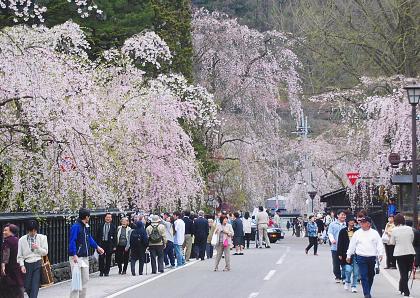
Kakunodate is a former castle town and samurai stronghold in today's Akita Prefecture. WhileKakunodate Castle no longer remains, the town is famous for its samurai tradition and its hundreds ofweeping cherry trees (shidarezakura).
Apart from the loss of its castle, Kakunodate remains remarkably unchanged since its founding in 1620. The town was built with two distinct areas, the samurai district and the merchant district. Once home to 80 families, the samurai district still has some of the best examples of samurai architecture in all ofJapan.
Kakunodate is also well known as the location of one of the Tohoku Region's most popular cherry blossom spots. Around late April and early May, large crowds of people come to see Kakunodate's special combination of pink blossoms and historic homes.
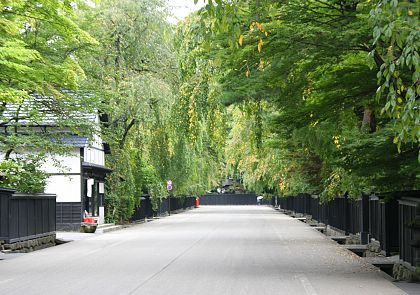
The Kakunodate samurai district, which once housed about 80 families, is one of the best examples ofsamurai architecture and housing in the country. Its wide streets and large courtyards are shaded by dozens of weeping cherry trees which bloom in early May. During this time, the wide streets are busy with hanami tourists.
Of the samurai houses that remain intact, six are open to the public and offer visitors the chance to see how middle class and wealthy samurai families might have lived. Of the six open houses, two are particularly noteworthy for their size and quality: the Aoyagi House and the Ishiguro House.
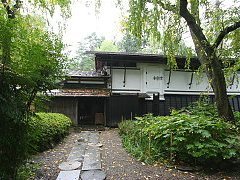
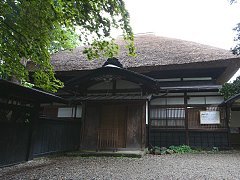
The Aoyagi House (Aoyagi-ke) is an impressive complex with multiple buildings containing museum collections, restaurants and gift shops. The displays provide interesting information in both English andJapanese on samurai traditions, lifestyle and Japan's historical context in relation to Kakunodate. It is a useful place to visit for those interested in Kakunodate's samurai history.
The second samurai home of special note is the Ishiguro House (Ishiguro-ke). The area open to visitors is much smaller than that of the Aoyagi House, largely because the family still resides in the rest of the house. On display is a small collection of samurai armor and clothing, as well as anatomical drawings and studies. The Ishiguro House also has a well preserved storeroom.
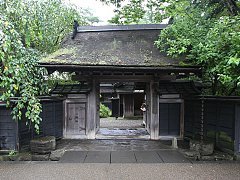
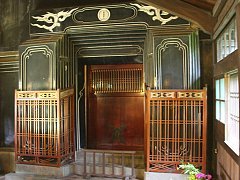
The other four open houses are free to enter and offer varying levels of accessibility. They are mostly examples of middle class samurai residences and thus, are smaller than the Aoyagi-ke and Ishiguro-ke. There are also two museums that may be of interest to visitors: Denshokan Museum displays Kakunodate's traditional products and craftwork, while Omura Art Museum houses a private glasswork collection.
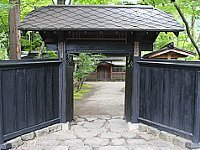
Odano Samurai House
Hours: 9:00 to 17:00
Admission: Free
Closed: November to mid April
Odano House has an open garden, however, it is not possible to enter the buildings. The sliding doors are left open in good weather so that visitors can look inside and admire the largetatami rooms and painted doors.
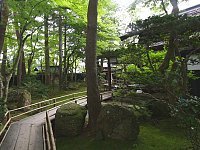
Kawarada Samurai House
Hours: 9:00 to 17:00
Admission: Free
Closed: November to mid April
Kawarada House is connected to Odano House (see above) via a small walkway. Like Odano House, the Kawarada House does not offer entry into its buildings. Instead, the doors are opened so that the interior can be admired.
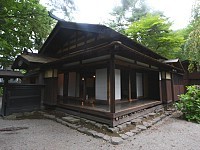
Iwahashi Samurai House
Hours: 9:00 to 17:00
Admission: Free
Closed: November to mid April
The Iwahashi House is another example of a middle-class samurai home. It is smaller and simpler in design and style. It can only be viewed from the outside.
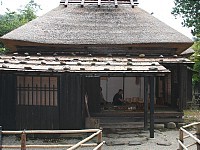
Matsumoto Samurai House
Hours: 9:00 to 17:00
Admission: Free
Closed: November to mid April
The Matsumoto House dates back to the Edo Period. Like the other free admission houses, visitors cannot enter the building, but can view the interior from the outside.
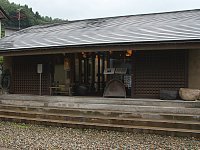
Omura Museum
Hours: 10:00 to 17:00 (until 16:00 from December to March)
Admission: 800 yen
Closed Thursdays (and Wednesdays from December to March)
This one-room museum shows a rotating selection of glasswork pieces from a private collection. Works by the French artist, Rene Lalique, are the prominent feature of this collection.
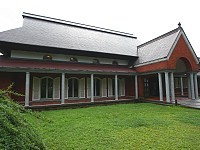
Denshokan Museum
Hours: 9:00 to 17:00 (until 16:30 from December to March)
Admission: 300 yen
Closed January 1
Denshokan Museum displays Kakunodate's history and traditional craft making. Kakunodate most prominent craft is cherry bark woodworking (kabazaiku), which is used to make tea canisters, dishes and large pieces of furniture.
ПРОДОЛЖУВА....
H
Hip.Hop_MKD
Гостин
Kanazawa
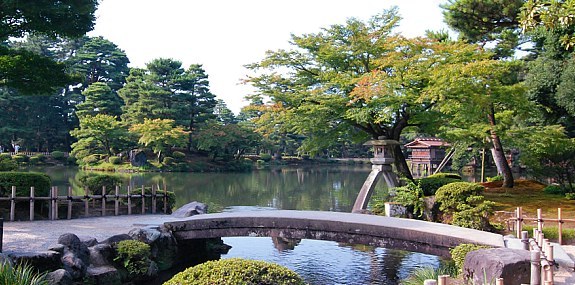
During World War Two, Kanazawa was Japan's second largest city (after Kyoto) to escape destruction by air raids. Consequently, parts of the old castle town, such as the Nagamachi samurai district and chaya entertainment districts, have survived in pretty good condition.
Today, Kanazawa remains an important city in its region and serves as the capital of Ishikawa Prefecture. The city boasts many historical attractions such as restored residences and districts, as well as modern museums. But Kanazawa's unchallenged main attraction is Kenrokuen, one of Japan's "three best landscape gardens" and by many considered the most beautiful of them all.
Kenrokuen (兼六園) is justifiably classified as one of Japan's "three most beautiful landscape gardens" alongside Mito's Kairakuen and Okayama's Korakuen. Many people consider it the best of them all.
The spacious garden used to be the outer garden of Kanazawa Castle. Constructed by the ruling Maeda family over a period of nearly two centuries, it was not opened to the public until 1871.
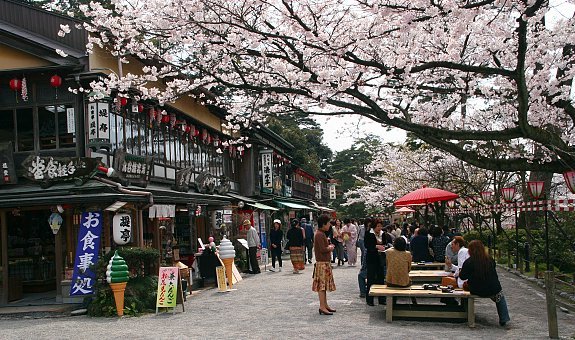
Kenrokuen features various ponds, streams, waterfalls, bridges, teahouses, trees, stones and flowers. The water for the many streams and rivers of the park is diverted from a distant river by a sophisticated water system constructed in 1632.
The name Kenrokuen literally means "Garden of the Six Sublimities", referring to spaciousness, seclusion, artificiality, antiquity, abundant water and broad views, which according to Chinese landscape theory are the six essential attributes that make up a perfect garden.
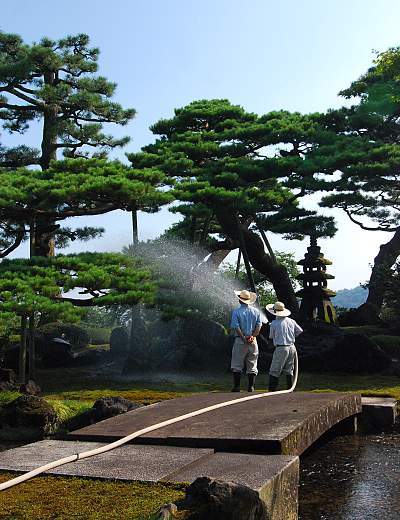
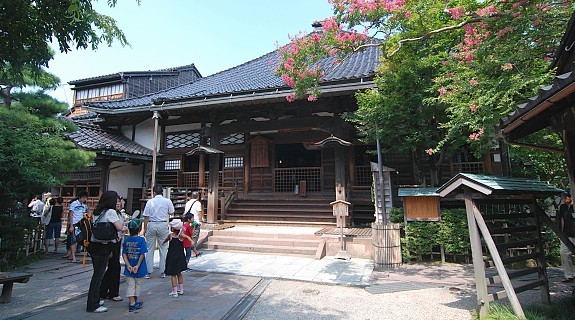
Myoryuji Temple (妙立寺, Myōryūji), commonly known as Ninjadera ("Ninja Temple"), was built by the Maeda lords, rulers over the region during the Edo Period. While not actually associated with ninjas, thetemple earned its nicknamed because of its many deceptive defences.
Since the shogun imposed strict building restrictions as one way of weakening his regional lords, Myoryuji was designed to circumvent the restrictions and serve as a disguised military outpost. It was built with considerable defences and escape routes, so that its defenders could alert the castle in the event of an attack.
The temple's defences aimed to guard against intruders or attack, and include hidden tunnels, secret rooms, traps, and a labyrinth of corridors and staircases. These can be viewed by guided tour (reservations required) held in Japanese, although excellent English guidebooks are available upon request.
Myoryuji is located in the Teramachi District in the south of the city. Populated by numerous temples, this area was originally located outside of the city limits as were the entertainment districts.
Ogimachi Village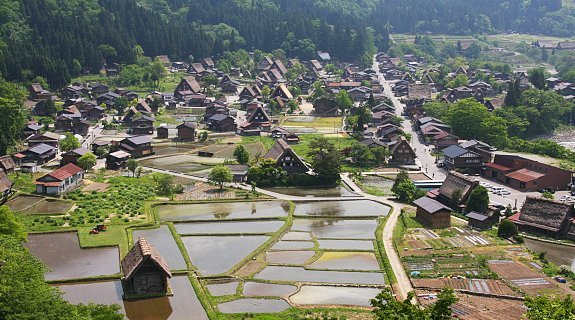
Ogimachi is the largest village and main attraction of Shirakawa-go. Declared a UNESCO world heritage site in 1995, the village is home to several dozen well preserved gassho-zukuri farmhouses, some of which are more than 250 years old.
The farmhouses are quite amazing structures, designed to withstand the harsh winters while providing a place to work and live, and are best seen either covered in snow or surrounded by green fields. Many of the farmhouses are now restaurants, museums or minshuku, where you can stay overnight.
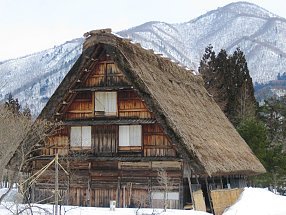
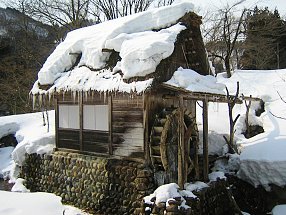
A number of farmhouses from the surrounding villages have been relocated to an open air museumacross the river from the town center in an effort to save them from destruction. This museum along with the large concentration of farmhouses and attractions in town and the area's accessibility make Ogimachi the best place in Shirakawa-go and Gokayama to see gassho-zukuri farmhouses.
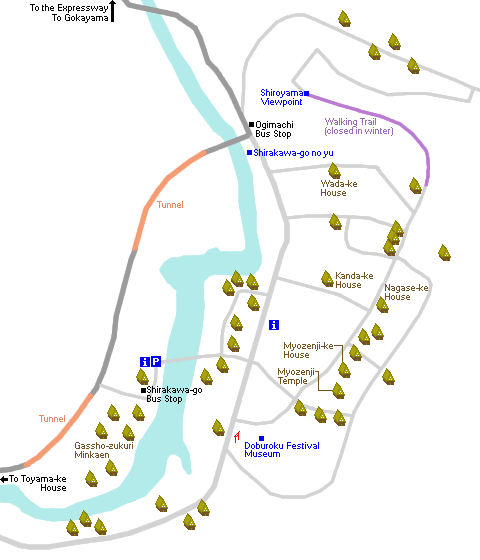
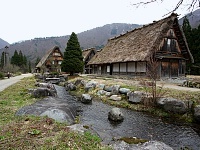
Gassho-zukuri Minkaen
Hours: 8:40 to 17:00 (9:00 to 16:00 December to March)
Admission ends 20 minutes before closing
Closed: Thursdays from December through March
Admission: 500 yen
This open air museum lies across the river from the village center. It exhibits farmhouses and other structures relocated to Ogimachi in order to save them from destruction.
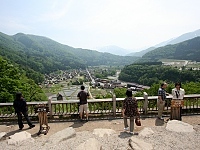
Shiroyama Viewpoint
The Shiroyama Viewpoint is north of the village center and offers nice views of Ogimachi and its farmhouses. The viewpoint can be accessed via a walking trail (closed in winter) in about 15 to 20 minutes from the village center or by a shuttle bus, which stops outside the Gassho-zukuri Minkaen open air museum.
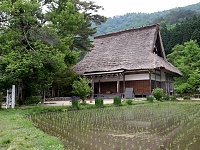
Myozenji Temple
Hours: 8:30 to 17:00 (9:00 to 16:00 December to March)
Closed: Irregular closing days
Admission: 300 yen
This temple is unusual as it has a thatched roof rather than the typical tiled roof seen on most temples. The main hall can be entered through the Miyozenji-ke house next door.
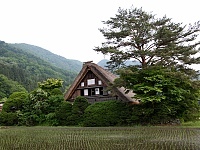
Wada-ke House
Hours: 9:00 to 17:00
Closed: Irregular closing days
Admission: 300 yen
The Wada family was one of the wealthiest families and village leaders of Ogimachi. Their former home is the largest gassho-zukuri farmhouse in the town, and is now open to the public as a museum.
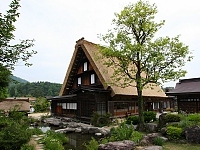
Kanda-ke House
Hours: 9:00 to 17:00
Closed: Wednesdays from December to February
Admission: 300 yen
This picturesque house is one of the best preserved farmhouse turned museums in Ogimachi. Located in the center of town, you can get good views of the surrounding houses from the windows on its upper floors.
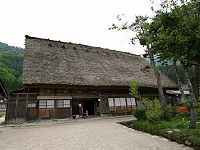
Nagase-ke House
Hours: 9:00 to 17:00
Closed: Irregular closing days
Admission: 300 yen
The Nagase family were doctors for the Maeda lords in Ishikawa Prefecture before relocating to Ogimachi. Their farmhouse turned museum exhibits some medical tools and gifts from the Maeda family. The upper floors display many tools for farming and raising silkworms.
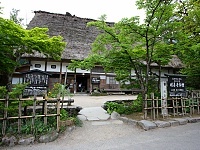
Myozenji-ke House
Hours: 8:30 to 17:00 (9:00 to 16:00 December to March)
Closed: Irregular closing days
Admission: 300 yen including entrance to the temple
The proprietor of this house speaks English and is more than happy to introduce it to visitors. This farmhouse is connected toMyozenji Temple next door and is where the priest of the temple lives. Admission to the house includes admission to the temple hall.
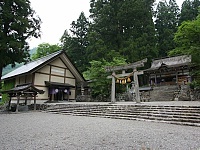
Doburoku Festival Museum
Hours: 9:00 to 19:00
Closed: December through March
Admission: 300 yen
This museum has displays on the Doburoku Festival held every year on October 14th and 15th. A feature of the festival is Doburoku Sake which is produced by the shrine and can be sampled at the museum.
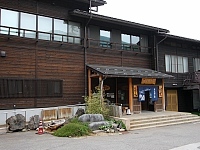
Shirakawa-go no Yu
Hours: 7:00 to 21:30
Closing: No closing days
Admission: 700 yen
The Shirakawa-go no yu is a combined minshuku and bath house that offers hot spring bathing to the visitors of Ogimachi. A small discount is offered to guests staying overnight at one of the traditional farmhouses in the area.
Attractions outside Ogimachi
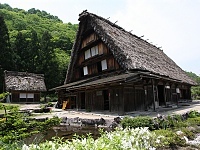
Toyama-ke House
Hours: 10:00 to 16:00
Closed: Wednesdays (Tuesday if Wednesday is a holiday), Dec 29 to Jan 3
Admission: 300 yen
Located about 15 minutes by car outside of Ogimachi, this old farmhouse now stands as a museum displaying typical period life. The farmland around the house continues to be worked by local farmers.
ПРОДОЛЖУВА....
- Член од
- 24 мај 2010
- Мислења
- 2.048
- Поени од реакции
- 4.640
 море хоп хиперчо низеден саде вадиш срцепарателни теми оди сеа да те видам не прокоментишај малку макар офтролопик пишал
море хоп хиперчо низеден саде вадиш срцепарателни теми оди сеа да те видам не прокоментишај малку макар офтролопик пишал  јапонија преубава дал да појдам до таму само за да си купам ноже за да си извршам сепуку кога ќе паднам на испит или азијатка да бркнам
јапонија преубава дал да појдам до таму само за да си купам ноже за да си извршам сепуку кога ќе паднам на испит или азијатка да бркнам  појди десет дена и дрецкај се на десетиот ден пред сите таму на аеродром... неќам, неќам дома, абе нееаааа не неќам домааахахааааааа
појди десет дена и дрецкај се на десетиот ден пред сите таму на аеродром... неќам, неќам дома, абе нееаааа не неќам домааахахааааааа 
ај едно "кратко" документарче за попoзнатиот самурајко-куркурајко Мијамото Мусаши
_The Great_
Il Genio
- Член од
- 18 јуни 2008
- Мислења
- 5.955
- Поени од реакции
- 3.318
Мене ми е животна желба да ја посетам Јапонија. Едноставно им се восхитувам, премногу ги почитувам и сметам дека се шлагот, најинтелегентниот народ во светот. Луѓе со огромен морал, гордост, култура, фантастична земја, живеам за денот кога ќе одам во Јапонија.


